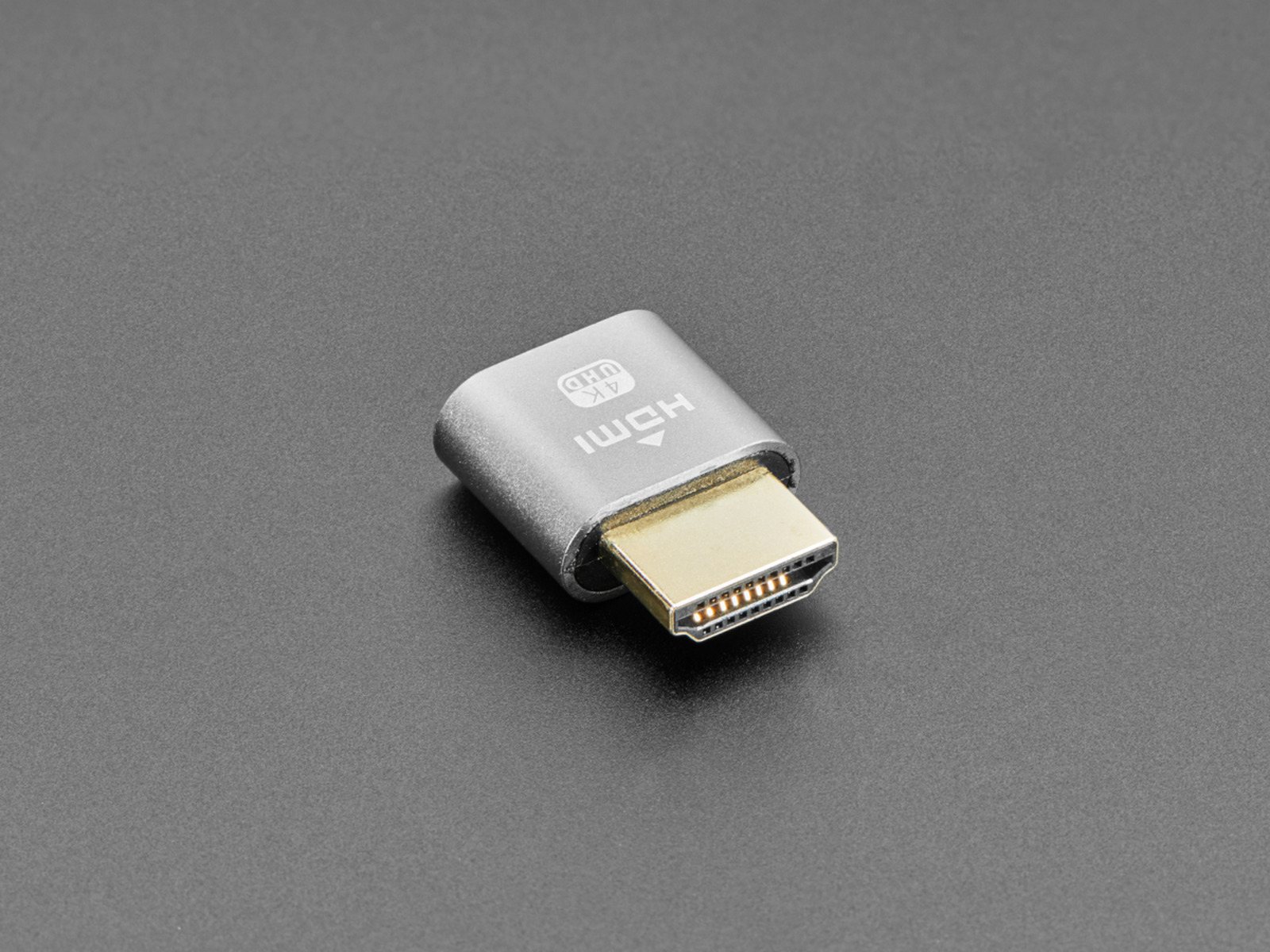Introduction
Welcome to the world of blockchain technology! In recent years, this revolutionary innovation has been making waves across various industries, promising to reshape the way we conduct transactions and exchange information securely. Whether you’re a tech guru or a complete novice, understanding the basics of blockchain technology is essential in today’s digital landscape. In this article, we will delve into the fundamentals and demystify the complex concepts behind blockchain.
So, what exactly is blockchain technology? At its core, blockchain is a decentralized digital ledger that records and verifies transactions across multiple computers or nodes. It allows for transparent and tamper-proof record-keeping, effectively eliminating the need for intermediaries in financial and other types of transactions.
Blockchain gained its fame primarily through its association with cryptocurrencies like Bitcoin and Ethereum. However, it’s important to note that while blockchain technology is the backbone of these digital currencies, its potential applications extend far beyond the realm of finance.
In the following sections, we will explore how blockchain technology works, its building blocks, and the role of cryptocurrencies within the ecosystem. We will also dive into the advantages of using blockchain, discuss potential real-world use cases, address common misconceptions, and touch on the challenges and limitations faced by this technology.
Whether you’re a business owner looking to optimize your operations, a technology enthusiast curious about the future of decentralized systems, or simply an individual exploring new opportunities, gaining a solid understanding of blockchain technology is crucial. So, let’s embark on this journey and unravel the mysteries of blockchain together!
What is Blockchain Technology?
Blockchain technology is a decentralized and distributed ledger system that enables secure and transparent transactions without the need for intermediaries. It is often referred to as a digital ledger or database that records and verifies transactions across multiple computers or nodes.
Unlike traditional centralized systems where data is stored in a single location and controlled by a central authority, blockchain operates on a peer-to-peer network. This means that every participant in the network has access to the same information, and any changes or additions made to the blockchain are visible to all participants in real time.
At its core, a blockchain consists of a series of blocks, each containing a list of transactions. These blocks are linked together in a chronological order, forming a chain. Each block contains a unique identifier called a hash, which is generated based on the data within the block and the hash of the previous block in the chain.
One of the key features of blockchain technology is its immutability. Once a block is added to the chain, it becomes extremely difficult to alter or tamper with the data within it. This is because altering the data in one block would require changing the hash of that block as well as the hashes of all subsequent blocks, making it computationally infeasible.
Another important aspect of blockchain technology is its consensus mechanism. In order to add a new block to the chain, a majority of participants in the network must agree that the block is valid. This agreement is achieved through various consensus algorithms, the most common being Proof of Work (PoW) and Proof of Stake (PoS).
Blockchain technology has gained widespread attention and interest due to its potential to revolutionize various industries. While it is commonly associated with cryptocurrencies like Bitcoin, the applications of blockchain extend far beyond digital currencies. From supply chain management and healthcare to voting systems and intellectual property rights, blockchain has the potential to improve efficiency, transparency, and security in a wide range of sectors.
In the next section, we will explore the inner workings of blockchain technology and understand how transactions are processed and validated on the blockchain.
How Does Blockchain Technology Work?
Blockchain technology works through a combination of cryptographic principles and distributed consensus mechanisms. Let’s take a closer look at the key components and processes involved in the functioning of a blockchain.
1. Decentralized Network: Blockchain operates on a decentralized network of computers or nodes. Each node stores a copy of the entire blockchain, making it resistant to single-point failures or attacks. This distributed nature ensures that no single entity has control over the entire system.
2. Transactions: At its core, blockchain is used to record and validate transactions. A transaction typically includes information such as the sender’s and recipient’s addresses, the amount transacted, and any additional data relevant to the specific blockchain application. Transactions are grouped into blocks and added to the blockchain.
3. Consensus Mechanisms: To ensure that all nodes in the network agree on the validity of transactions and the order in which they are added to the blockchain, consensus mechanisms are employed. These mechanisms can vary, but the two most popular ones are Proof of Work (PoW) and Proof of Stake (PoS).
– Proof of Work (PoW): In a PoW consensus algorithm, participants, also known as miners, compete to solve a complex mathematical puzzle. The first miner to find a solution is rewarded with newly created cryptocurrency or transaction fees. This solution, known as a “proof,” is then added to the blockchain, verifying the validity of the block and its transactions.
– Proof of Stake (PoS): In a PoS consensus algorithm, validators are chosen to create new blocks based on the amount of cryptocurrency they hold or “stake.” Validators are selected randomly, with the probability of selection being proportional to their stake. This mechanism aims to reduce the energy consumption associated with PoW algorithms.
4. Cryptography: Cryptographic techniques are employed to ensure the security and integrity of blockchain transactions. Each transaction is digitally signed using the sender’s private key, providing authentication and preventing tampering. Additionally, encryption techniques are used to protect the confidentiality of sensitive data.
5. Immutability: Once a block is added to the blockchain, it becomes extremely difficult to alter or remove. This is achieved through the use of hash functions and linking blocks to form a chain. Changing the data in a block would require modifying the hash of that block and all subsequent blocks, making it computationally impractical.
6. Smart Contracts: Blockchain technology also supports the use of smart contracts, which are self-executing contracts with predefined rules and conditions. These contracts are stored and executed on the blockchain, providing transparency, automation, and trust in various business and legal agreements.
By combining these elements, blockchain technology creates a secure, transparent, and decentralized system for recording and validating transactions. In the next section, we will explore the building blocks of a blockchain in more detail.
The Building Blocks of Blockchain
Blockchain technology is built upon several key components that work together to create a secure and efficient system for recording and validating transactions. Understanding these building blocks is essential to grasp the inner workings of blockchain. Let’s explore these elements in more detail:
1. Blocks: The blockchain is made up of a series of blocks, each containing a list of transactions. These blocks are linked together in a chronological order to form a chain. Each block contains a unique identifier, known as a hash, which is generated based on the data within the block and the hash of the previous block in the chain. This linking of blocks ensures the immutability and integrity of the blockchain.
2. Transactions: Transactions are the core element of blockchain. They represent the exchange of value or information between participants in the network. Each transaction contains essential details such as the sender’s and recipient’s addresses, the amount transacted, and any additional data specific to the blockchain application. Transactions are grouped together in a block, and once added to the blockchain, they are permanently recorded and cannot be altered.
3. Hash Functions: Hash functions play a crucial role in the security and integrity of blockchain. A hash function takes an input (data) and produces a fixed-size string of characters, which is the hash value. This value is unique to the input data, meaning even a small change in the data will result in a significantly different hash value. Hash functions are used to generate the unique hash of each block in the blockchain, ensuring that any modification to the data within a block will lead to a change in its hash value.
4. Distributed Ledger: The ledger, or database, in a blockchain is distributed across multiple computers or nodes within the network. Each node has a copy of the entire blockchain, ensuring redundancy and fault tolerance. This distributed nature of the ledger eliminates the need for a central authority and makes it resistant to single-point failures or attacks. It also provides transparency, as all participants can verify the transactions and the state of the blockchain.
5. Consensus Mechanism: Consensus mechanisms are employed in blockchain to agree on the validity and order of transactions. They ensure that all nodes in the network come to a consensus on the state of the blockchain, even in the presence of malicious actors. Popular consensus mechanisms include Proof of Work (PoW) and Proof of Stake (PoS). These mechanisms require participants to solve computational puzzles or stake their own cryptocurrency to validate transactions and add new blocks to the blockchain.
By combining these building blocks, blockchain technology creates a decentralized, transparent, and secure environment for recording and validating transactions. In the next section, we will explore the role of cryptocurrencies in the blockchain ecosystem.
The Role of Cryptocurrencies
Cryptocurrencies play a vital role in the blockchain ecosystem, serving as the digital assets that are transacted and stored on the blockchain. While blockchain technology can be used for various applications beyond cryptocurrencies, such as supply chain management or identity verification, cryptocurrencies remain one of the most well-known and widely adopted use cases of blockchain. Here’s a closer look at the role of cryptocurrencies within the blockchain ecosystem:
1. Medium of Exchange: Cryptocurrencies act as a decentralized digital medium of exchange, enabling peer-to-peer transactions without the need for intermediaries like banks or financial institutions. They allow individuals to transact directly with one another, providing greater freedom, lower costs, and faster transaction times compared to traditional payment systems.
2. Store of Value: Cryptocurrencies serve as a store of value, similar to traditional currencies or assets. By leveraging blockchain technology, cryptocurrencies offer a secure and decentralized way to hold and preserve wealth. The scarcity and mathematical properties of certain cryptocurrencies, such as Bitcoin, contribute to their store-of-value characteristics.
3. Incentive Mechanism: Cryptocurrencies utilize incentives to motivate participants to maintain the security and integrity of the blockchain network. In Proof-of-Work (PoW) systems, miners compete to solve complex mathematical puzzles to validate transactions and add new blocks to the blockchain. In return, they receive newly minted cryptocurrency as a reward. This incentive mechanism ensures the decentralized nature and security of the network.
4. Tokenization: Cryptocurrencies have enabled the concept of tokenization, which involves representing real-world assets or digital assets as tokens on the blockchain. This tokenization allows for the fractional ownership of assets, enhanced liquidity, and the ability to trade and transfer ownership more efficiently. Tokenization has the potential to revolutionize industries such as real estate, art, and intellectual property rights.
5. Funding Mechanism: Cryptocurrencies have also emerged as an alternative way to raise funds through Initial Coin Offerings (ICOs) or token sales. Startups and projects can issue their own tokens, representing ownership or utility within their ecosystems. Investors can participate in these token sales and potentially benefit from the future success of the project. This crowdfunding method has offered new possibilities for innovation and investment.
6. Innovation and Development: The existence of cryptocurrencies encourages technological innovation and the development of new blockchain-based applications. By providing a financial incentive for developers and entrepreneurs, cryptocurrencies have fueled the growth of the blockchain ecosystem. This has led to the emergence of decentralized applications (dApps), smart contracts, and other innovative solutions that leverage blockchain technology.
It’s important to note that while cryptocurrencies are intrinsic to blockchain technology, the technology itself is not limited to cryptocurrencies. Blockchain has the potential to revolutionize various industries by optimizing processes, enhancing security, and increasing transparency. In the next section, we will explore the advantages of utilizing blockchain technology.
The Advantages of using Blockchain Technology
Blockchain technology offers a multitude of advantages that have the potential to transform traditional systems and revolutionize various industries. Let’s explore some of the key benefits and advantages of utilizing blockchain:
1. Enhanced Security: One of the primary advantages of blockchain technology is its high level of security. The decentralized nature of blockchain ensures that no single entity has control over the network, making it difficult for hackers to compromise the data or steal sensitive information. Additionally, the immutability of blockchain ensures that once data is recorded, it cannot be altered without consensus from the network participants.
2. Improved Transparency: Blockchain provides transparency by offering a shared and distributed ledger visible to all participants. Each transaction added to the blockchain is recorded and can be accessed by anyone on the network. This transparency can help prevent fraud and increase trust among the parties involved, especially in industries such as supply chain management, where traceability and authenticity are crucial.
3. Increased Efficiency: By eliminating the need for intermediaries and central authorities in transactions, blockchain technology streamlines processes and reduces costs. It enables direct peer-to-peer transactions, eliminating the need for third-party verification, documentation, and reconciliation. This increased efficiency can lead to faster transaction speeds, shorter settlement times, and reduced administrative overhead.
4. Cost Savings: Blockchain can significantly reduce costs in various industries. By cutting out intermediaries and automating processes, companies can save money on fees and administrative expenses associated with traditional systems. Smart contracts, powered by blockchain, further contribute to cost savings by automating contractual agreements and removing the need for intermediaries, lawyers, or notaries.
5. Improved Data Integrity: With blockchain, data is recorded on a distributed ledger and verified through consensus mechanisms. This ensures the integrity and accuracy of the data, reducing the risk of errors, tampering, or fraud. The cryptographic techniques used in blockchain technology provide strong security measures to protect data confidentiality and authentication.
6. Decentralization and Resilience: Blockchain operates on a decentralized network of computers or nodes, making it highly resilient to failures or attacks. Unlike centralized systems that rely on a single point of control, blockchain’s distribution of data across multiple nodes ensures that even if some nodes go offline or are compromised, the network can still operate and maintain the integrity of the blockchain.
7. Traceability and Audibility: Blockchain’s transparent nature allows for traceability and audibility of transactions. Every transaction recorded on the blockchain can be traced back to its origin, providing a comprehensive audit trail. This feature is especially valuable in sectors such as supply chains, finance, and healthcare, where tracking the origin and movement of goods, funds, or sensitive information is crucial.
These advantages highlight the immense potential of blockchain technology to transform industries and revolutionize traditional systems. From enhanced security and transparency to increased efficiency and cost savings, blockchain offers a powerful and innovative solution. In the next section, we will explore the potential applications of blockchain technology across various sectors.
The Potential Applications of Blockchain
Blockchain technology has the potential to revolutionize a wide range of industries and bring about transformative changes in various sectors. Let’s explore some of the potential applications of blockchain:
1. Supply Chain Management: Blockchain can enhance transparency and traceability in supply chains by providing a decentralized and immutable record of every transaction or event along the supply chain. This can help prevent fraud, counterfeiting, and ensure the authenticity of products. Additionally, blockchain can streamline processes, reduce paperwork, and improve overall efficiency in supply chain management.
2. Healthcare: Blockchain has the potential to transform healthcare by securely storing and sharing patient records, encrypting sensitive data, and facilitating interoperability among different healthcare providers. It can help reduce medical errors, improve patient privacy, enable secure sharing of medical research data, and enhance the efficiency of healthcare delivery.
3. Finance and Banking: The finance and banking industry can benefit greatly from blockchain technology. Blockchain can provide secure and transparent peer-to-peer transactions, enable faster and cheaper cross-border payments, and facilitate the issuance and trading of digital assets. It can also enhance the efficiency of processes such as identity verification, fraud detection, and Know Your Customer (KYC) compliance.
4. Real Estate: Blockchain has the potential to revolutionize the real estate industry by enabling fractional ownership, improving property title transfers, and streamlining property transactions. Through tokenization, individuals can invest in real estate assets without the need for intermediaries, making it accessible to a broader market and increasing liquidity.
5. Intellectual Property: Blockchain technology can help protect intellectual property rights by enabling secure and timestamped record-keeping of creations, inventions, and patents. This can provide an immutable proof of ownership and help prevent intellectual property infringement or disputes.
6. Voting Systems: Blockchain can enhance the transparency, security, and efficiency of voting systems by providing a tamper-proof record of votes. It can enable secure and decentralized voting, ensuring the integrity of elections and preventing voter fraud.
7. Energy and Utilities: Blockchain can revolutionize the energy and utilities sector by enabling peer-to-peer energy trading, automated billing, and transparent tracking of energy transactions. It can facilitate the integration of renewable energy sources into the grid and provide a decentralized and efficient energy sharing system.
These are just a few examples of the potential applications of blockchain technology. The versatility and benefits of blockchain extend to other areas such as supply chain finance, insurance, logistics, gaming, and more. As the technology continues to evolve, it is expected to unlock new possibilities and disrupt traditional systems across multiple industries.
Common Misconceptions about Blockchain
Despite the rising popularity and widespread adoption of blockchain technology, there are still several common misconceptions surrounding its capabilities and limitations. Let’s address some of these misconceptions:
1. Blockchain is the same as Bitcoin: One of the most prevalent misconceptions is that blockchain and Bitcoin are synonymous. While Bitcoin was the first and most well-known application of blockchain technology, blockchain itself is a broader concept that has potential uses beyond cryptocurrencies. Blockchain is the underlying technology that enables the secure and transparent recording of transactions, whereas Bitcoin is just one of the many applications built on top of blockchain.
2. Blockchain is only for technology experts: Another misconception is that blockchain technology is complex and can only be understood and utilized by technical experts. While blockchain does involve complex cryptographic principles, there are user-friendly platforms and tools available that make it accessible to individuals and businesses with varying levels of technical expertise. Moreover, as the technology continues to mature, there will be an increasing number of user-friendly applications and interfaces that simplify the adoption and utilization of blockchain technology.
3. Blockchain is completely anonymous: While it is true that blockchain offers a certain degree of privacy, it is not entirely anonymous. Every transaction recorded on the blockchain is associated with a unique address that can be traced back to the sender and receiver. While the identities behind the addresses may not be readily apparent, blockchain analysis techniques can be used to link addresses to real-world identities. Some newer blockchain systems have also implemented privacy features to enhance user confidentiality.
4. Blockchain is invulnerable to hacking: While blockchain technology offers robust security measures, it is not completely invulnerable to hacking. Although altering or tampering with data on a blockchain is extremely difficult due to the cryptographic nature of the technology, attacks on blockchain networks have occurred in the form of 51% attacks, phishing scams, and vulnerabilities in smart contracts. It is crucial to implement proper security protocols and best practices to mitigate the risks associated with blockchain applications.
5. Blockchain can solve all trust issues: While blockchain technology provides transparency and decentralized verification mechanisms that enhance trust, it cannot solve all trust-related issues on its own. Trust in a blockchain system is ultimately derived from trust in the participants and the accuracy of the data being recorded. Blockchain technology can help reduce reliance on intermediaries and provide a more transparent and auditable environment, but it does not eliminate the need for trust in the integrity and honesty of the parties involved.
It is important to have a clear understanding of these common misconceptions about blockchain technology to fully grasp its capabilities and potential. By dispelling these misconceptions, we can have a more accurate understanding of blockchain’s strengths and limitations. In the next section, we will explore the challenges and limitations faced by blockchain technology.
Challenges and Limitations of Blockchain Technology
While blockchain technology offers numerous advantages, it also faces certain challenges and limitations that need to be addressed for its widespread adoption and scalability. Let’s explore some of the main challenges associated with blockchain:
1. Scalability: One of the primary challenges faced by blockchain technology is scalability. Traditional blockchain systems, such as Bitcoin and Ethereum, have limitations on the number of transactions they can process per second. As the number of participants and transactions on the blockchain increases, it can lead to slower transaction speeds and higher fees. Developing solutions that improve the scalability of blockchain without sacrificing security and decentralization remains a significant challenge.
2. Energy Consumption: Proof-of-Work (PoW) consensus algorithms, which are commonly used in blockchain systems, require substantial computational power and energy consumption. This has raised concerns about the environmental impact and sustainability of blockchain. Finding more energy-efficient consensus mechanisms, such as Proof-of-Stake (PoS) or alternative energy sources for mining, is crucial to address the energy consumption challenge.
3. Interoperability: The lack of interoperability between different blockchain networks is another obstacle to widespread adoption. Currently, each blockchain operates as an independent system with its own protocols and standards. Efforts are being made to develop interoperability protocols that facilitate the seamless exchange of assets and data between different blockchains, enabling more efficient collaboration and integration.
4. Regulatory and Legal Issues: Blockchain technology operates across borders, which raises regulatory and legal challenges. The lack of standardized regulations can hinder the adoption of blockchain in certain industries, such as finance and healthcare. Establishing clear regulatory frameworks that address issues related to data privacy, identity verification, and smart contract enforceability is essential to foster trust and facilitate the mainstream adoption of blockchain.
5. User Experience: Blockchain technology still faces user experience challenges that can make it difficult for the general public to adopt and utilize. Tasks such as key management, wallet setup, and transaction confirmation can be complex for non-technical users. Improving the user interface, enhancing security measures, and providing user-friendly tools and applications are crucial in making blockchain technology more accessible and user-friendly.
6. Governance and Consensus: Blockchain networks need to establish effective governance models to address decision-making and protocol updates. Achieving consensus among participants in the network can be challenging, especially when different stakeholders have different interests and motivations. Developing governance structures that are democratic, transparent, and inclusive is key to maintaining the integrity and development of blockchain systems.
Addressing these challenges and limitations will require continued research, innovation, and collaboration among industry players, regulators, and technologists. While blockchain technology offers immense potential, it is essential to recognize and overcome these hurdles in order to harness its full capabilities for widespread adoption and real-world impact.
Conclusion
Blockchain technology has proven to be a game-changer, offering unprecedented opportunities to transform various industries and revolutionize traditional systems. Its decentralized, transparent, and secure nature has the potential to enhance security, increase efficiency, and foster trust in a wide range of applications.
Throughout this article, we have explored the fundamentals of blockchain technology, its working principles, and the advantages it brings. We have debunked common misconceptions and addressed the challenges and limitations faced by blockchain. Despite these challenges, blockchain technology continues to evolve and mature, paving the way for innovative and transformative solutions.
The potential applications of blockchain are vast and diverse. From supply chain management and healthcare to finance and real estate, blockchain technology has the potential to disrupt and improve numerous industries. It can enable greater transparency, security, and efficiency, while also promoting decentralization and empowering individuals.
However, for blockchain technology to realize its full potential, it requires collaboration, research, and the development of robust governance structures. Regulatory frameworks need to be established to address legal and compliance concerns, while interoperability and scalability solutions are necessary for seamless integration and mass adoption.
In conclusion, blockchain technology holds tremendous promise as a transformative force in our digital age. It has the power to reshape the way we transact, store and verify information, and build trust in both traditional and emerging industries. Embracing blockchain technology and exploring its potential applications can unlock new opportunities, drive innovation, and shape the future of our interconnected world.

























